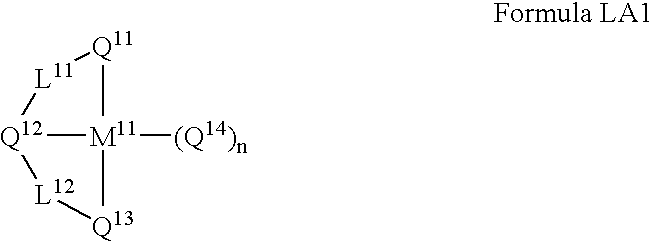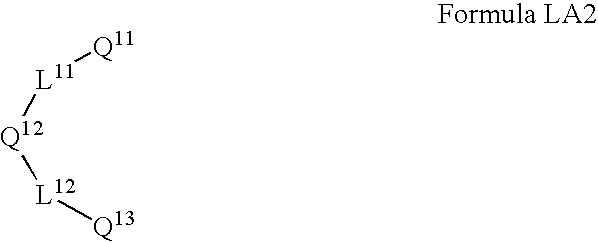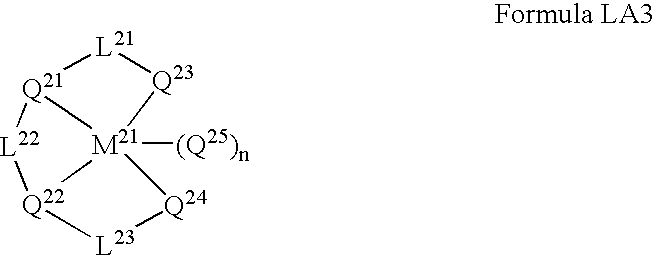Organic electroluminescent element
a technology of electroluminescent elements and organic elements, which is applied in the direction of discharge tube/lamp details, luminescent compositions, discharge tubes luminescnet screens, etc., can solve the problems of insufficient light-emitting efficiency, inability to achieve improvement in light-emitting layer performance, and inability to achieve light-emitting efficiency
- Summary
- Abstract
- Description
- Claims
- Application Information
AI Technical Summary
Benefits of technology
Problems solved by technology
Method used
Image
Examples
example 1
1. Preparation of the Organic Electroluminescent Element
[0140] (Preparation of Organic EL Element No. 1 of the Invention)
[0141] A 2.5 cm square ITO attached glass substrate having a 0.5 mm thickness (manufactured by Geomatec Co., Ltd.; surface resistance: 10Ω / □) was placed in a washing container to apply ultrasonic cleaning in 2-propanol, and then, UV-ozone treatment was applied for 30 minutes. On the transparent anode, the following layers were deposited in accordance with a vacuum deposition method. In the examples of the present invention, a deposition rate was 0.2 nm / second, unless otherwise specified, wherein the deposition rate was measured by the use of a quartz oscillator. The thicknesses of layers described below were also measured by using the quartz oscillator.
[0142]—Positive Hole-Injection Layer—
[0143] 2-TNATA and F4-TCNQ were co-evaporated so as to an amount of F4-TCNQ to be 0.3% by weight with respect to the 2-TNATA. The thickness was 160 nm.
[0144]—Positive Hole-Tr...
PUM
 Login to View More
Login to View More Abstract
Description
Claims
Application Information
 Login to View More
Login to View More - R&D
- Intellectual Property
- Life Sciences
- Materials
- Tech Scout
- Unparalleled Data Quality
- Higher Quality Content
- 60% Fewer Hallucinations
Browse by: Latest US Patents, China's latest patents, Technical Efficacy Thesaurus, Application Domain, Technology Topic, Popular Technical Reports.
© 2025 PatSnap. All rights reserved.Legal|Privacy policy|Modern Slavery Act Transparency Statement|Sitemap|About US| Contact US: help@patsnap.com



